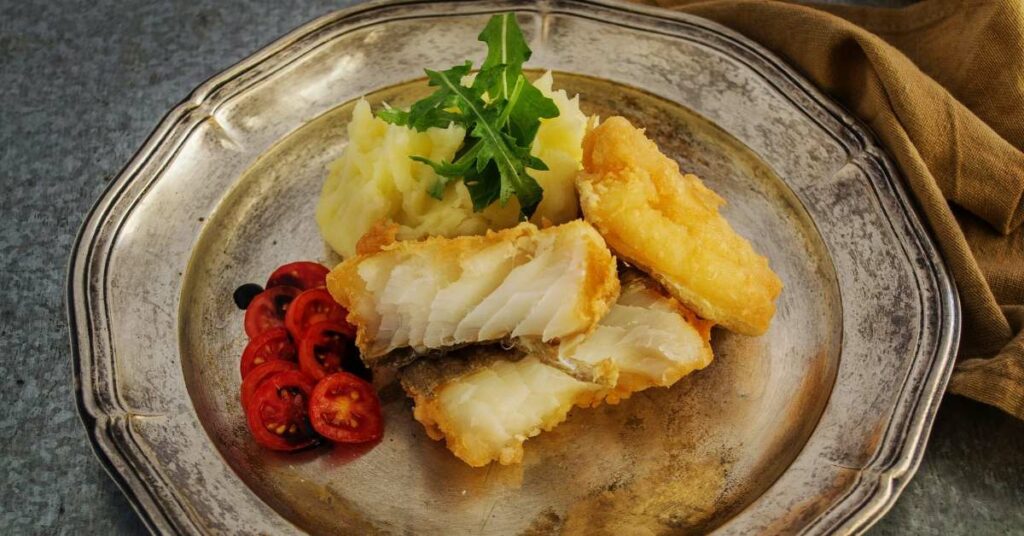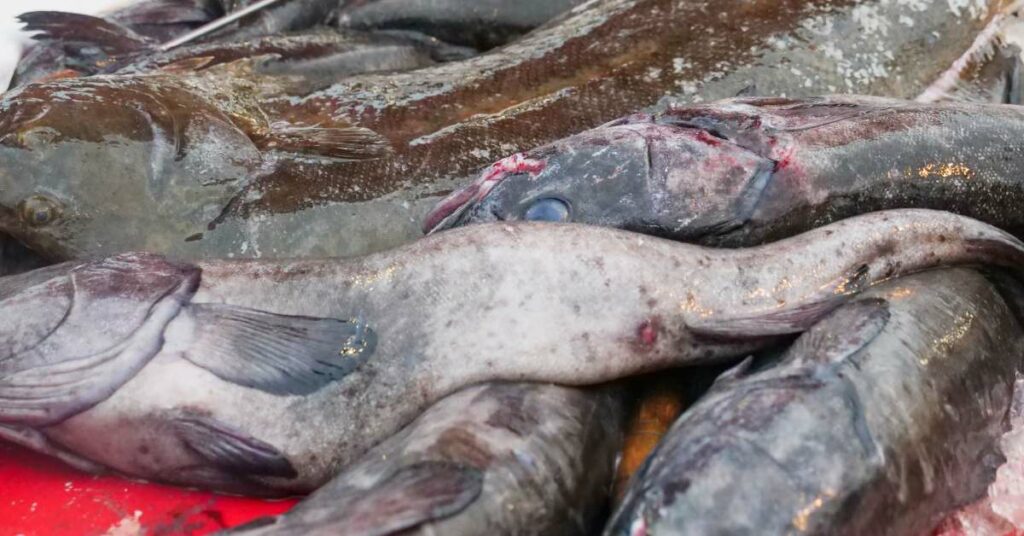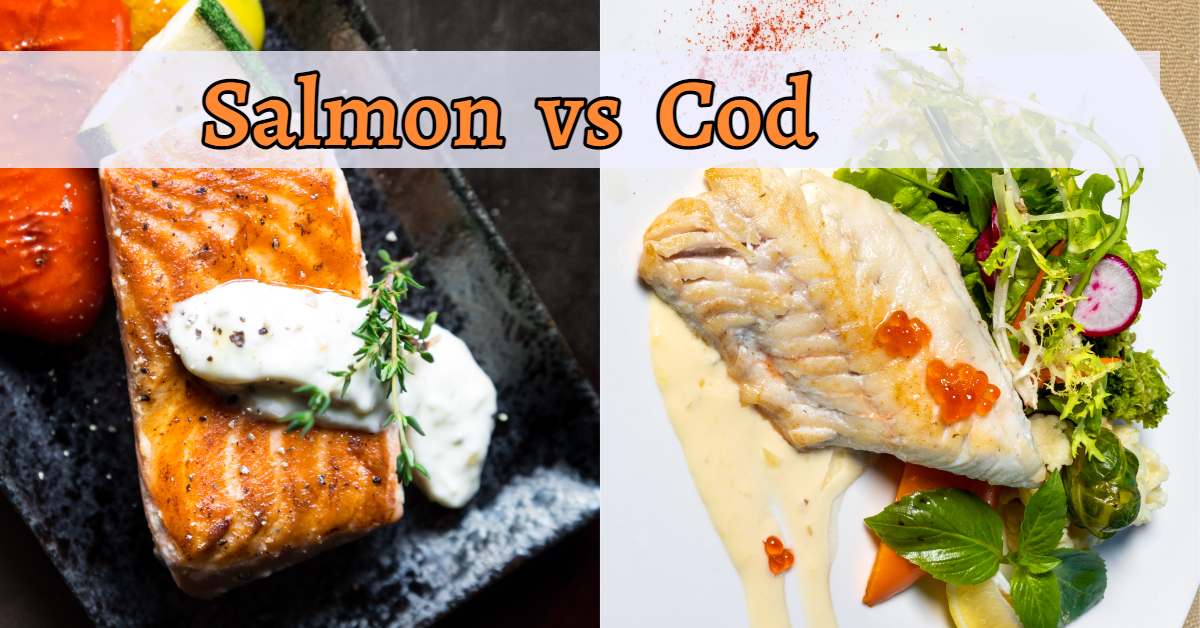Salmon and cod are two popular types of fish that are enjoyed around the world. While they have some similarities, there are also significant differences between them. Here is a summary of some key similarities and differences between salmon and cod:
Similarities:
- High Nutritional Value: Both salmon and cod are nutrient-dense, with high protein content, omega-3 fatty acids, and several essential vitamins and minerals.
- Versatility: Both salmon and cod can be prepared in a variety of ways, including baking, grilling, pan-searing, and frying.
- Availability: Salmon and cod are widely available in most parts of the world, making them popular choices for seafood dishes.
Differences:
- Flavor and Texture: Salmon has a distinct, rich flavor and a soft, oily texture, while cod has a milder taste and firmer, flakier texture.
- Color: Salmon has a reddish-pink flesh color, while cod has a white flesh color.
- Habitat: Salmon is a migratory fish that is found in both fresh and saltwater environments, while cod is primarily found in cold, deep ocean waters.
- Sustainability: While some salmon populations are threatened by overfishing, wild cod populations are generally considered more sustainable and are heavily regulated in many parts of the world.
- Price: Salmon is typically more expensive than cod due to its higher demand and limited availability.
So while both salmon and cod offer numerous nutritional benefits and can be prepared in a variety of ways, they differ in their flavor, texture, habitat, sustainability, and price.
Both are excellent choices for seafood lovers, and the choice between them will depend on personal taste preferences, budget, and environmental considerations.
Cod vs Salmon Taste Comparison
Salmon and cod differ significantly in terms of their flavor and texture. Salmon has a rich, distinct flavor that is often described as “oily” or “buttery.” This is due to its high fat content, particularly the presence of healthy omega-3 fatty acids. The flesh of salmon is also soft and delicate, with a tender, moist texture that melts in the mouth. This makes it a popular choice for dishes like sushi, gravlax, and smoked salmon.
In contrast, cod has a milder flavor and a firmer, flakier texture. Its flesh is white and lean, with a delicate sweetness that pairs well with a variety of seasonings and sauces. Cod is often used in dishes like fish and chips, fish tacos, and fish stews. Unlike salmon, cod is not particularly oily, which can make it more suitable for those who prefer a leaner protein source.

The differences in flavor and texture between salmon and cod can make them more suitable for different types of dishes and cooking methods. Salmon’s rich, buttery flavor and soft texture make it ideal for delicate preparations like sushi, while cod’s mild taste and firmer texture make it better suited for more robust preparations like fish stews or fish and chips.
Ultimately, the choice between salmon and cod will depend on personal taste preferences and the desired flavor and texture profile for a particular dish.
Salmon vs Cod Nutrition Details
Both salmon and cod are excellent sources of protein, with a 3.5-ounce serving of cooked salmon containing approximately 22 grams of protein, while the same amount of cooked cod contains around 20 grams of protein. However, salmon contains more total fat, including heart-healthy omega-3 fatty acids, than cod. A 3.5-ounce serving of cooked salmon contains around 13 grams of fat, while the same amount of cooked cod contains only around 1 gram of fat.
Salmon is also an excellent source of vitamins and minerals. It is particularly rich in vitamin B12, vitamin D, and selenium. A 3.5-ounce serving of cooked salmon contains approximately 80% of the daily recommended intake of vitamin B12, 70% of the daily recommended intake of vitamin D, and 50% of the daily recommended intake of selenium. Cod, on the other hand, is a good source of vitamin B12 and phosphorus, but contains less vitamin D and selenium than salmon.
In terms of omega-3 fatty acids, salmon is a particularly rich source. These essential fatty acids are important for brain health, heart health, and reducing inflammation in the body. A 3.5-ounce serving of cooked salmon contains approximately 1.8 grams of omega-3 fatty acids, while the same amount of cooked cod contains only about 0.2 grams.
Overall, both salmon and cod offer numerous health benefits and are excellent sources of protein, vitamins, and minerals. However, salmon is a particularly rich source of heart-healthy omega-3 fatty acids and certain vitamins, making it a great choice for those looking to improve their overall health and wellbeing.
Salmon vs Cod Mercury Content
Both salmon and cod are generally considered to be low in mercury compared to other types of fish. However, there are some differences in the mercury content between the two.
Mercury is a naturally occurring element that can be found in small amounts in the environment. It can accumulate in fish and other seafood, and in high levels, can be harmful to human health.
Salmon is generally considered to have low levels of mercury, although the exact amount can vary depending on the type of salmon and where it was harvested. Wild salmon tends to have lower mercury levels than farmed salmon, as farmed salmon may be fed fish meal that can contain higher levels of mercury.
Cod is also generally considered to be low in mercury, but again, the exact amount can vary depending on where it was harvested. In general, cod from colder waters tends to have lower mercury levels than cod from warmer waters.
Overall, both salmon and cod are considered to be safe and healthy choices when it comes to mercury content. However, pregnant women, nursing mothers, and young children may want to limit their intake of fish high in mercury, such as swordfish and shark, and consult with a healthcare professional about safe fish consumption levels.

Cod vs Salmon Sustainability Issues
When it comes to sustainability, both salmon and cod have unique challenges and considerations.
Salmon is one of the most popular fish in the world, and it is harvested from both wild and farmed sources. Wild salmon populations can be vulnerable to overfishing, which can lead to declines in their numbers and even extinction. Some types of farmed salmon can also have negative environmental impacts, including pollution, the use of antibiotics, and the spread of diseases to wild populations.
However, there are also sustainable options for salmon, such as salmon that is harvested from certified sustainable fisheries or farmed salmon that is produced using sustainable and eco-friendly practices.
Cod, on the other hand, has faced significant challenges due to overfishing in the past. Some populations of cod have declined drastically, and in some cases, have even collapsed entirely. This has led to stricter regulations on cod fishing in many areas, and some populations are now showing signs of recovery.
When it comes to purchasing sustainable cod, consumers can look for certifications from organizations like the Marine Stewardship Council (MSC), which certify that the cod has been harvested using sustainable practices.
Overall, both salmon and cod have faced sustainability challenges in the past, but there are now more sustainable options available for both types of fish. Consumers can play an important role in supporting sustainable fisheries and reducing the environmental impact of their seafood choices.
Cod vs Salmon Price Comparison
There are several factors that can influence the retail price difference between salmon and cod:
- Availability: The availability of the fish can have a big impact on its price. If there is a shortage of either salmon or cod due to factors such as overfishing, natural disasters, or changing environmental conditions, the price may go up.
- Production costs: The cost of producing or harvesting the fish can also affect the price. For example, farmed salmon may have higher production costs due to the need for feed, water, and other resources.
- Market demand: Consumer demand can play a big role in the price of fish. If there is a high demand for salmon, the price may be higher than for cod, even if production costs are similar.
- Quality: The quality of the fish can also affect its price. For example, salmon that is labeled as wild-caught and sustainably harvested may command a higher price than salmon that is farmed or not sustainably sourced.
- Geography: The location of the fishery can also impact the price. For example, salmon that is caught in Alaska may be more expensive than salmon that is caught in other parts of the world due to factors like transportation costs and higher labor costs in the United States.
Overall, the retail price difference between salmon and cod can vary depending on a range of factors, including availability, production costs, market demand, quality, and geography.
What’s Better Cod or Salmon – Conclusion
By now we understand that both types of fish are excellent choices for health conscious individuals who are looking for both nutrition and value. The differences that exist between these two types of popular seafood merely create distinct options which will depend on a person’s personal preferences and budget.
At salmonfacts.org, of course we’re biased towards the varieties of salmon species. However, admittedly, we do opt for a nice piece of cod every once in a while!

